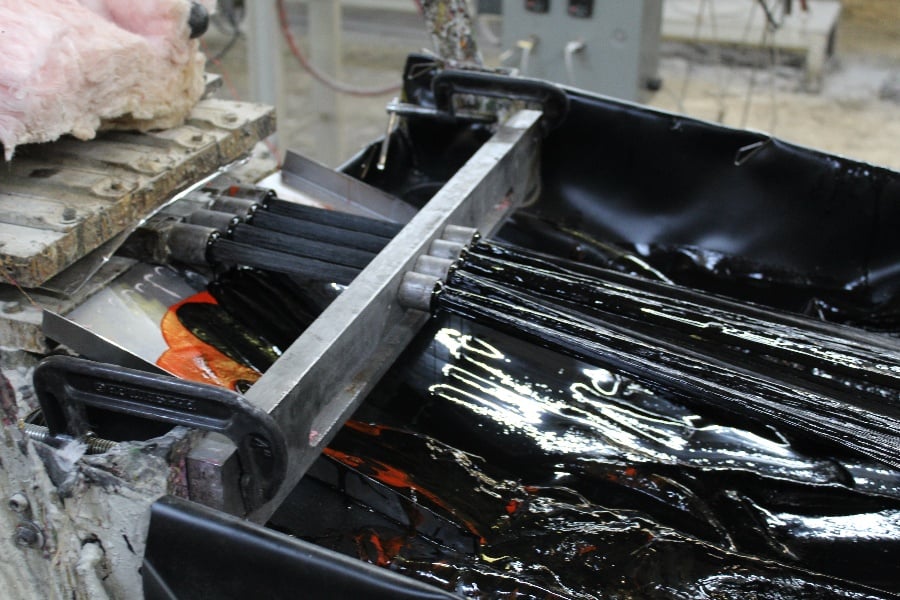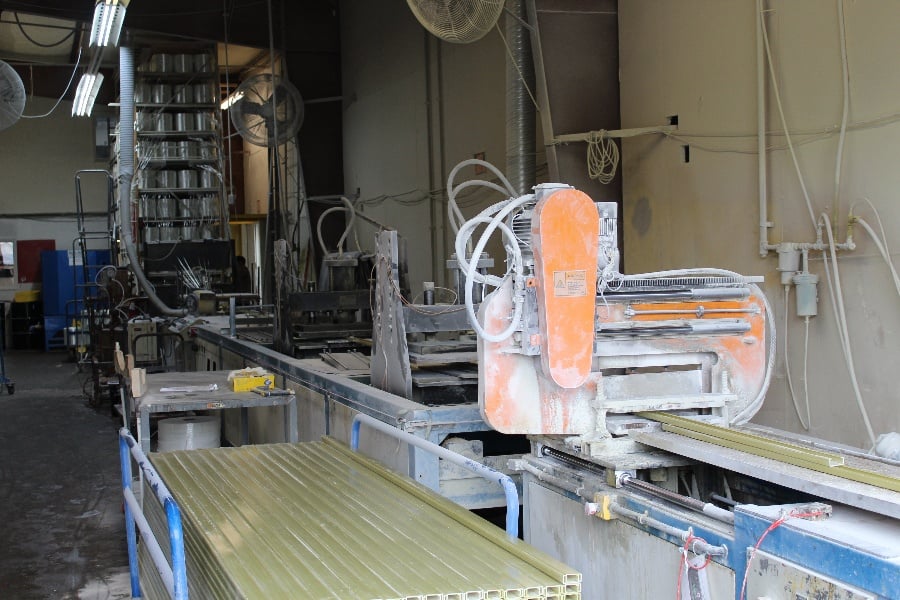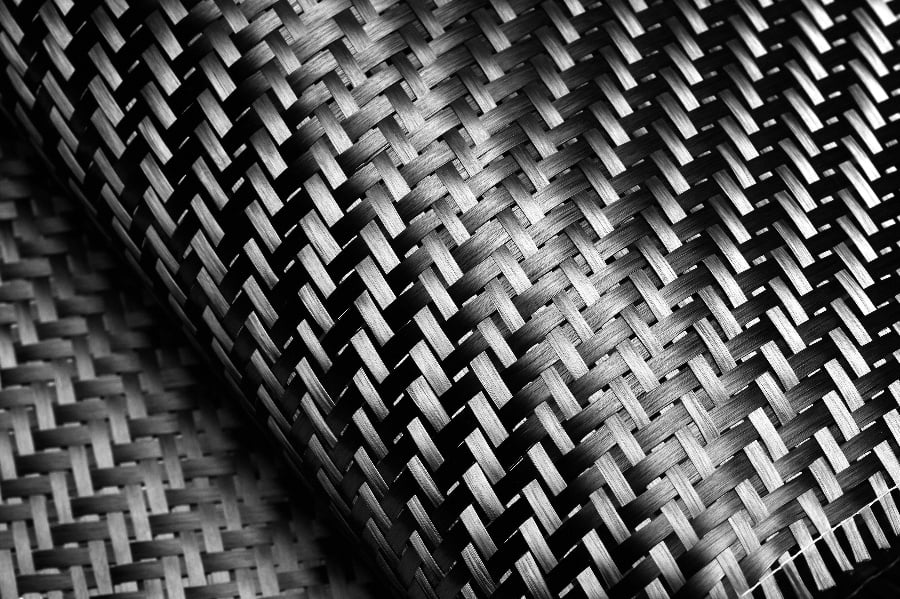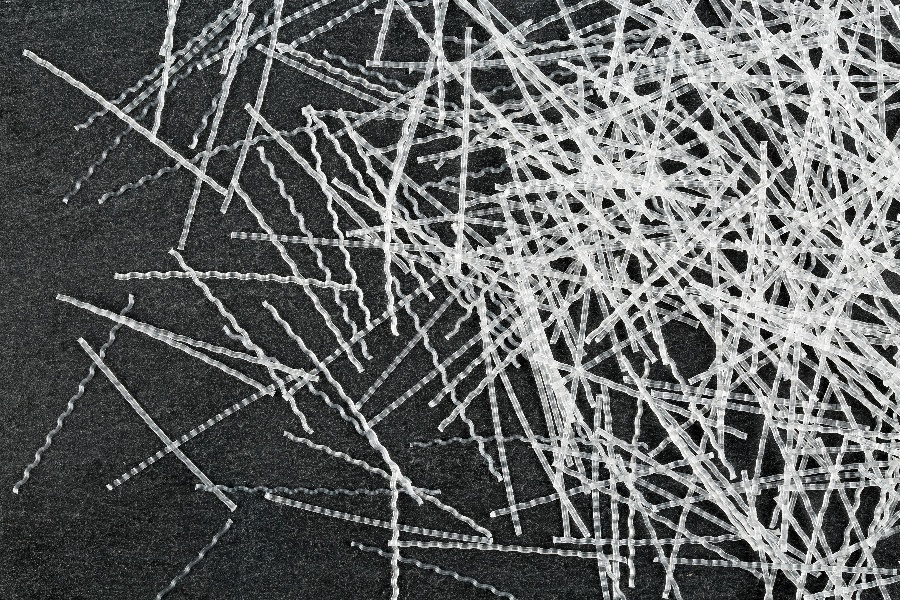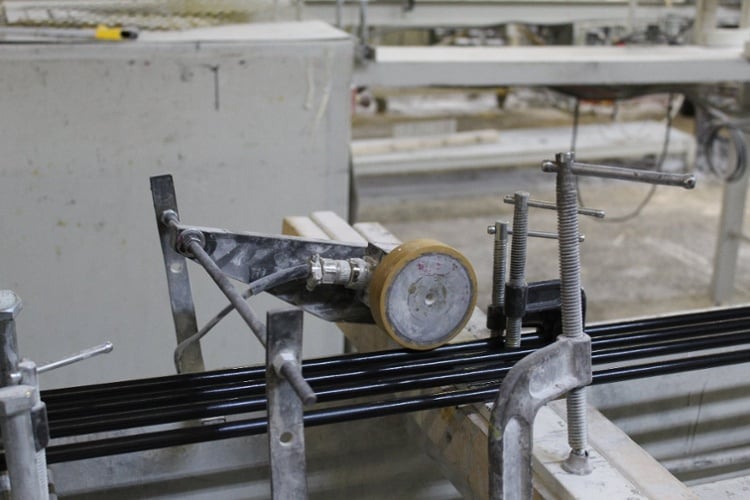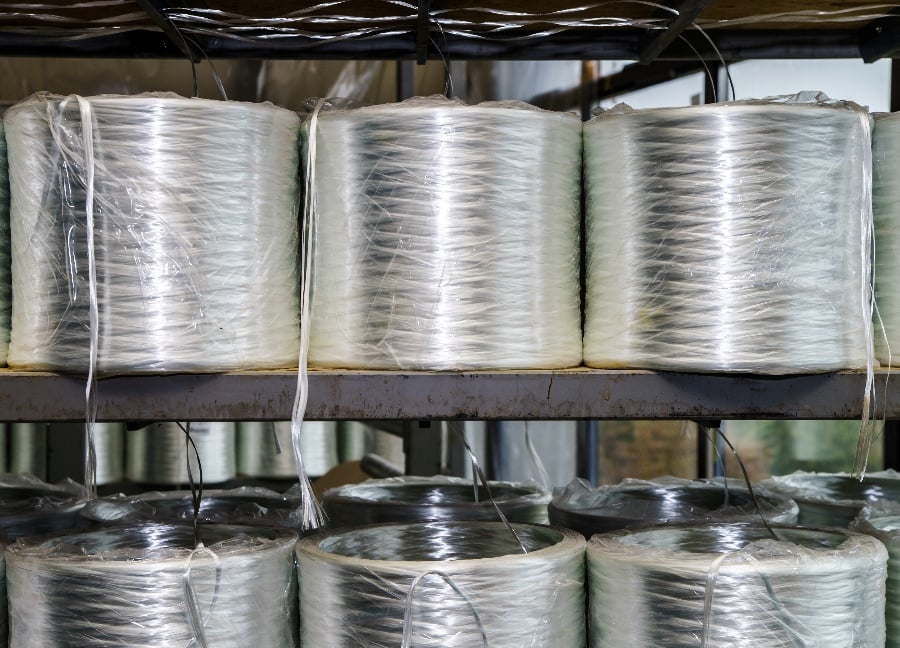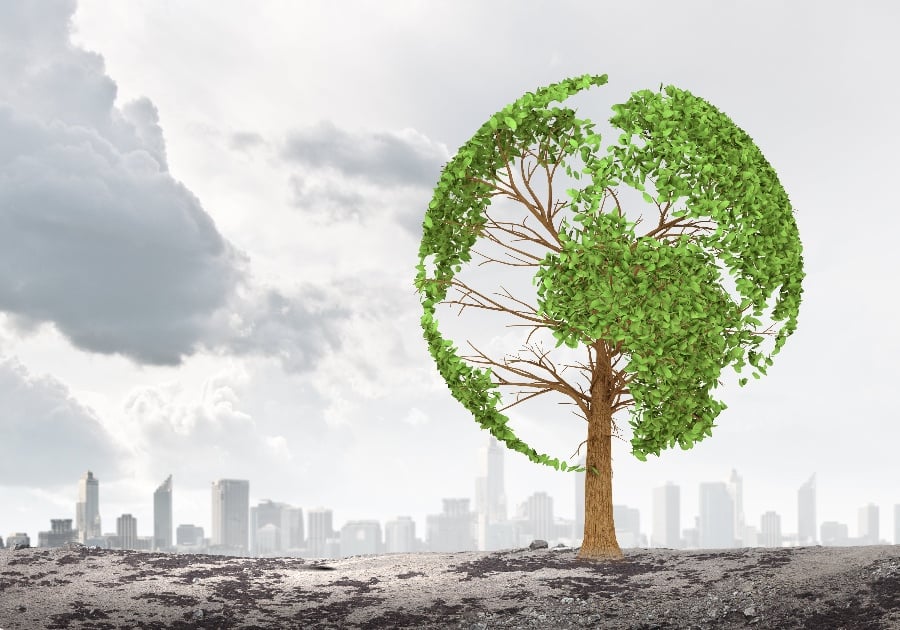
With customers looking for better-quality products that are easy to maintain, manufacturers are turning to pultruded products as a low maintenance and highly tolerant replacement to wood and metals like steel and aluminum.
Originally developed in the U.S. in the 1950s by Goldsworthy, pultrusion is one of the biggest composites for manufacturing and is expected to grow due to increased demand for multiple industries such as infrastructure, telecommunications, oil & gas and aerospace.
In fact, the global pultrusion market is expected to grow to $3.4 billion by 2024 with a CAGR of 4.0% from 2019 to 2024, according to market researcher Lucintel.
What is Pultrusion?
Pultrusion converts reinforced fibers and liquid resin into a fiber-reinforced plastic (FRP) via a pulling method. The fibers are saturated by being pulled through a resin bath, then shaped, pulled through a heated steel die, and shaped again.
Once hardened, it is cut and urethane pull blocks are used to prevent the finished product from being cracked or deformed.
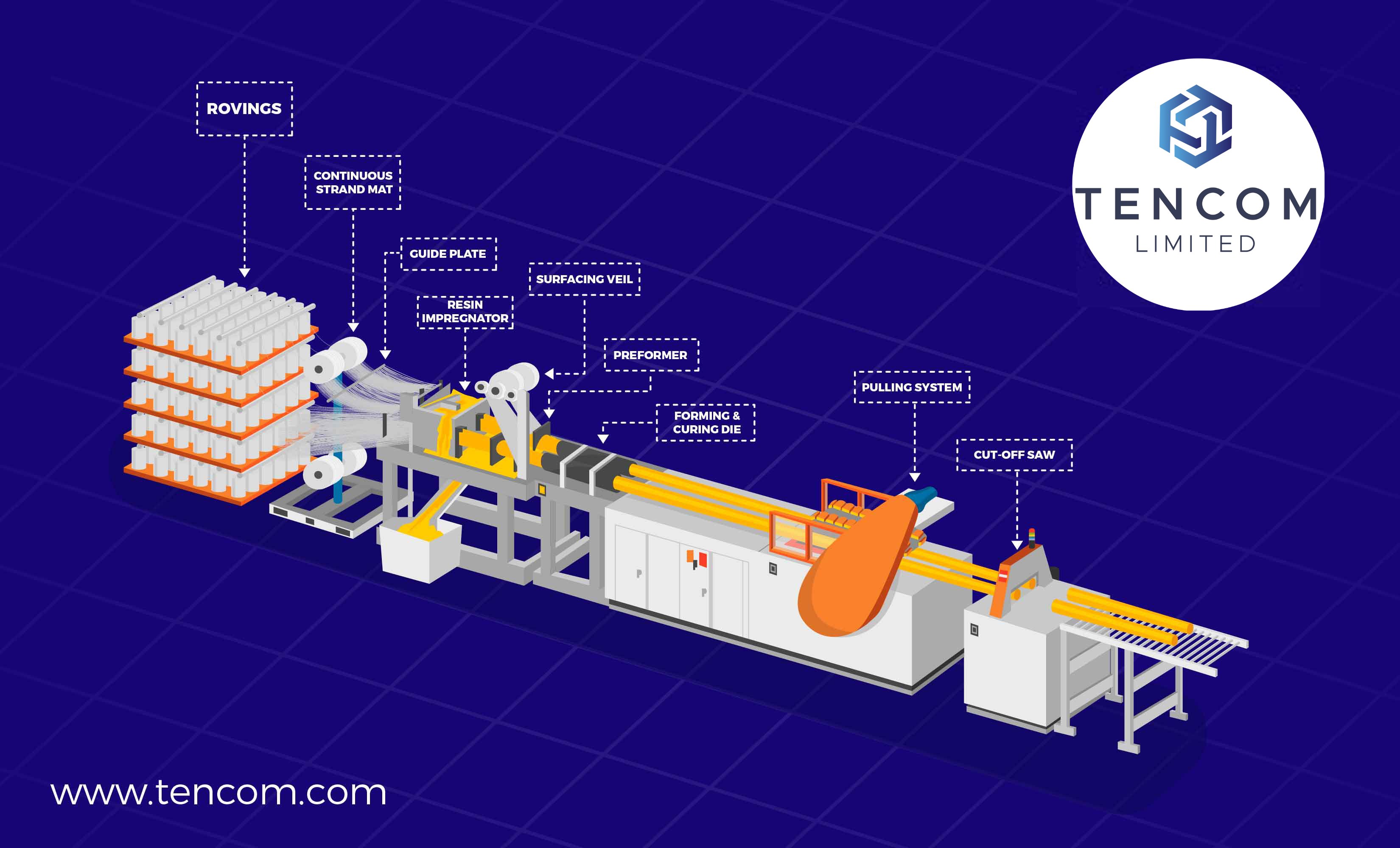
This type of pulling method allows for high-fiber load and controlled resin content. A range of reinforcing fibers and formats can be used, such as glass, carbon, polyester, epoxy and vinyl ester, as well as thermoplastic resins.
Many different types of resin and additives can be added to make sure the final product has the properties needed.
Composites can be pigmented into nearly any color and can be made to have special appearance like wood grain, marble and granite. The final product can be painted, cut, dripped and bolted using conventional tools.
According to the European Pultrusion Technology Association, these types of composites, such as glass fiber reinforced plastic (GFRP) rebar, can maintain their micro-structural integrity and mechanical properties for 15 years of service and sometimes longer.
Low Maintenance And Highly Versatile
Over the next decade, the demand for pultruded products is projected to grow to be one of most promising segments of the composites industry.
Pultrusion is now the preferred form of manufacture of composite parts for thousands of products in key application markets such as infrastructure, telecommunication, oil & gas, as well as utilities.
Pultruded products can be applied across a variety of industry verticals as they offer a wide variety of advantages when compared to traditional products like steel, aluminium and wood.
The stability and thermal performance of pultruded applications make a great alternative to wood, PVC, steel and aluminium.
For example, FRPs are used by designers, builders and homeowners for a variety of products such as energy-efficient windows, thermal breaks, for oil and gas tubes, and sports equipment.
Pultruded products last longer when compared to the corrosion levels of metals used for bridges as they are resistant to weather-induced decay.
Additionally, they can also be used in sucker rods in the oil industry, as they are lightweight and lower installation and energy costs. They can also used in spar cap structures for wind turbine blades, due to its lightweight and weather-resistance nature.
Combined with low maintenance, high tolerance, durability and strength, pultruded products can help businesses minimize expenses and callbacks.
Advantage: Pultruded Products
- Lightweight- Items that are made via pultrusion are 80% lighter than steel and approximately 30% of the weight of aluminium. This makes such products easier to transport and install, ultimately helping to lower costs.
- High-strength- When compared on a kilogram for kilogram basis, glass fiber composites have higher strength than metals. Pultruded products are the strongest on the axis (lengthwise) direction. The orientation and format can be varied to optimize the required strength of the final product and give extra strength to highly stressed areas.
- Corrosion resistant- Glass fiber composites are naturally impervious to moisture and other chemical elements that other materials are susceptible to. This means pultruded products will not rot or rust, requiring minimal maintenance. Composites are the perfect material for anything that is exposed to the elements, especially in coastal areas with airborne and waterborne salt and moisture.
- Durable- Composites are durable and have a long life span, which means they need to be replaced less often than conventional materials. Pultrusion composites last longer than wood, and are also lighter.
- Fire-Safety- Fire-resistance additives can be added to pultruded composites, making them saver and compliant with fire safety regulations.
- Thermal insulation - Composites have a lower thermal conductivity, especially compared to metals, making them a great alternative for structures that need to minimize energy loss.
- Electrical insulation- Pultruded materials are also non-conductive and good for current carrying applications, such as utility poles.
- Sustainable - Composites are recyclable at the end of their life, which make them a sustainable option for companies looking to go green. They are also long-lasting and good for insulation, making them a great choice for energy-efficient buildings.
Future Growth
The key driver of development opportunities for pultruded products is the growing demand for durable and lightweight products that are resistant to corrosion for various end user industries.
By 2020, in the North American market, pultrusion is expected to achieve revenues of $1.06 billion, with a CAGR of 5%. Infrastructure and construction will be the major growth sectors, with products including pultruded glass fiber of great importance to the 5G infrastructure.




